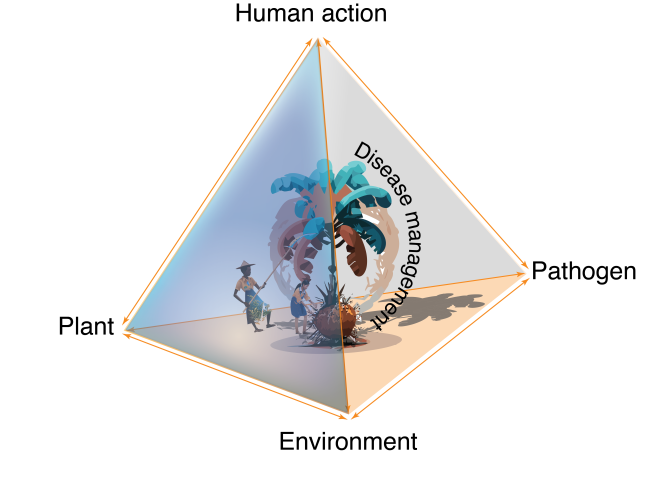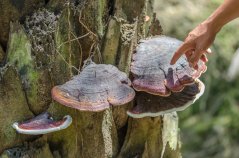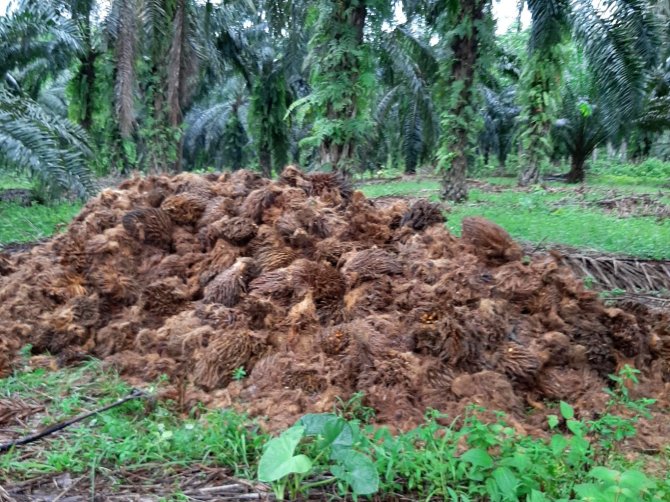Project
OIL-CLiPS
An interdisciplinary research program unravelling the causes of disease outbreaks in oil palm affected by changes in climate and farmer practices
Introduction
Oil palm is a contested crop for its contribution to deforestation, environmental pollution and land conflicts. It is cultivated by large plantation companies but also by millions of smallholders providing them with a livelihood. In its favour we can say that it is the most resource efficient oil crop in terms of land needed and nutrient input per ton of oil produced. The crop provides cheap cooking oil for poor people, ingredients for many products worldwide and foreign currency to the producing countries. Oil palm has a very small genetic bases and is mainly cultivated in monocultures, therefore oil palm plantations are highly susceptible to pest and disease outbreaks.
For environmental and social reasons, but also anticipating climate change, oil palm cultivation practices are changing towards increased use of organic nutrient sources, a more circular use of oil palm residues, integration with crops, livestock or trees and decreased use of pesticides.
In Southeast Asia basal stem rot caused by Ganoderma boninense is gaining importance, whereas bud rot caused by Phytophthora palmivora is wiping out plantations in South America. Surprisingly, the diseases are only found in one continent while the pathogens are present in both. It is poorly understood why. Changing climate and cultivation practices can aggravate disease outbreaks and given increased globalization, the diseases may readily cross continents. Negative consequences will then be for the livelihood of smallholders, affordability of palm oil for consumers, income for companies and national economies. Hence the urgency to join forces to investigate these oil palm disease outbreaks and their drivers.
The program
Disease outbreaks are the result of an interplay between multiple factors. These factors are context specific and tend to evolve over time. There are no linear cause effect relations leading to simple solutions. Research needs therefore to combine different disciplines addressing different factors simultaneously. The objective is not to kill the pathogens but rather preventing the pathogens to lead to disease outbreaks.

In the context of Colombia a bud rot resistant oil palm variety (OxG) has been developed and planted in different locations. This variety differs in many aspects from the common Elaeis guineensis. Key questions are therefore the following. What would be the simulated yield of this resistant variety under climate change conditions. How does the pathogen and the disease evolve under different management and climate conditions. Which collective or individual management practices are needed to prevent breaking of the resistance and/or preventing outbreaks leading to large yield losses. When would it still be economically sensible to cure a diseased palm. To what extend are co-infections occurring.
In the context of Indonesia there is not yet a basal stem rot resistant variety. Disease incidence particularly increases from one oil palm cultivation cycle to the next. Questions resonate around the following: Which factors are contributing to the development of the disease. What could be the effect of climate change? What is the effect of new practices such as oil palm intercropping, cattle integration, and agroforestry as well as use of oil palm residues or cover crops on disease development and spread. Will it be possible to contain the pathogen by affecting the soil microbiome and if so how? What is the current knowledge and practice of farmers and local authorities affecting the pathogen spread and the disease outbreaks and what are the associated costs?
Organisation
The research asks for an interdisciplinary approach. Therefore, in each of the two oil palm producing countries and at Wageningen University researchers of the four following disciplines are participating in the core program: phytopathologist, social scientists/economist, agronomist/farming systems expert, climate scientist/crop modeller. Additional expertise from animal sciences and agroforestry are already aligned. The actual research will be executed by several PhD students per country which are supervised by staff of at least two disciplines of Wageningen University and one staff member of one of the disciplines in the respective country.
Locations
The program has chosen Indonesia, the largest palm oil producer, and Colombia the 4th producer worldwide as countries to act as examples for the continents. This does not exclude work in other countries such as Malaysia, Brazil etc.
Partners
- Wageningen University (WUR), based in the Netherlands
- University Gadjah Mada (UGM), based in Indonesia
- CENIPALMA, oil palm research institute, based in Colombia
- SD Guthrie, oil palm company, based in Malaysia
- Disagro, service provider in Latin America, based in Guatamala


